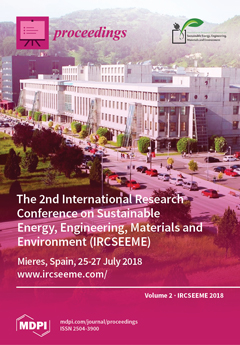Proceedings, 2018, IRCSEEME 2018
The 2nd International Research Conference on Sustainable Energy, Engineering, Materials and Environment
Mieres, Spain | 25–27 July 2018
Issue Editors:
Eduardo Alvarez Alvarez, University of Oviedo, Spain
Manuel Rico Secades, University of Oviedo, Spain
Antonio Navarro Manso, University of Oviedo, Spain
Mónica Gandum Martins, Theorem Ltd., UK
- Issues are regarded as officially published after their release is announced to the table of contents alert mailing list.
- You may sign up for e-mail alerts to receive table of contents of newly released issues.
- PDF is the official format for papers published in both, html and pdf forms. To view the papers in pdf format, click on the "PDF Full-text" link, and use the free Adobe Reader to open them.



